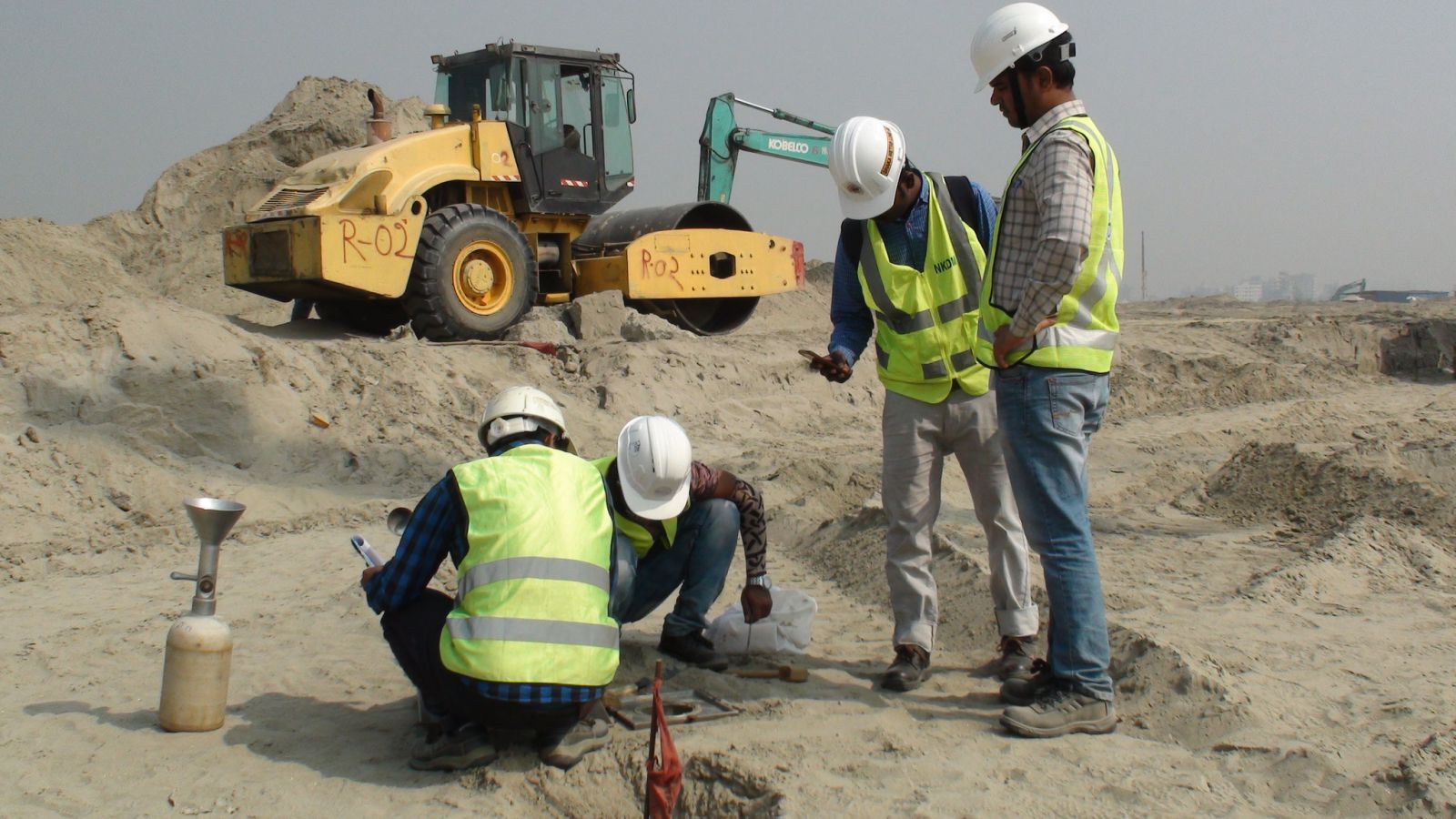The Interdisciplinary Approaches in the Geotechnical Market: Connecting the Gap Between Engineering, Geology, and Environmental Scientific Research for Optimum Project Outcomes
The assimilation of design, geology, and environmental science within the geotechnical industry is not simply useful; it is critical for attaining ideal job end results. This interdisciplinary cooperation cultivates a detailed understanding of facility website problems, permitting innovative solutions to emerge. By analyzing vital functions and effective case studies, we can uncover the vibrant interaction that drives job success. Nevertheless, challenges continue to be in successfully managing these multidisciplinary efforts, questioning concerning future trends and prospective advancements. What techniques might arise to facilitate this vital partnership and improve the efficiency of geotechnical practices?
Significance of Interdisciplinary Cooperation
The relevance of interdisciplinary cooperation in the geotechnical market can not be overstated. Effective geotechnical jobs require the combination of diverse competence from different areas, including engineering, geology, and ecological scientific research. This cooperation makes sure that all elements of a job are considered, leading to thorough remedies that resolve complex difficulties.
When functioning in seclusion,Interdisciplinary partnership promotes innovation by making it possible for experts to share understandings and methodologies that may not be noticeable. By leveraging the toughness of multiple techniques, teams can identify prospective dangers, enhance style procedures, and improve the sustainability of geotechnical tasks. Such partnership advertises an all natural understanding of site-specific problems, which is essential for accurate evaluation and decision-making.
The complexity of geotechnical jobs requires a coordinated method to analytical. Eventually, interdisciplinary collaboration is essential for advancing ideal techniques and attaining excellence in the geotechnical sector.
Key Functions of Each Self-control
Cooperation amongst different self-controls is not just advantageous; it is crucial for the successful implementation of geotechnical tasks. Each self-control-- design, geology, and environmental science-- plays an unique yet interconnected duty that adds to forecast efficacy and sustainability.
Geotechnical engineers are largely in charge of making structures and ensuring structural honesty. They evaluate dirt and rock buildings to examine load-bearing capacities, giving important information for secure building techniques. Their experience enables the solution of ingenious remedies to complicated obstacles.

Ecological researchers analyze the potential impacts of building on ecosystems and water resources. They conduct environmental evaluations and develop reduction strategies to decrease adverse results. By incorporating eco-friendly factors to consider, they make certain conformity with guidelines and promote sustainability throughout the task lifecycle.
Situation Studies of Effective Combination
Successful assimilation of geotechnical disciplines can be exhibited through different study that highlight the effectiveness of team effort in dealing with intricate engineering challenges. One significant instance is the building and construction of the Hong Kong-- Zhuhai-- Macau Bridge, where a collaborative method including geotechnical engineering, geology, and environmental scientific research was essential. Rock hounds and designers operated in unison to examine the seabed problems and maximize the foundation design, making sure security and reducing environmental impact.
One more impactful instance is the renovation of incline security in the San Francisco Bay Location, where an interdisciplinary group integrated geotechnical analysis with ecological evaluations. By incorporating geological studies and hydrological research studies, the group properly identified prospective landslide risks and executed reliable mitigation steps, improving safety and sustainability.
Moreover, the redevelopment of Brownfield sites often needs a multidisciplinary method. In one situation in Chicago, collaboration among geotechnical designers, environmental researchers, and city planners caused the successful removal of infected soil, permitting the safe makeover of the site right into an area park. These situation studies highlight that interdisciplinary collaboration not just addresses technological difficulties but also fosters ingenious remedies that profit both neighborhoods and jobs.
Obstacles in Multidisciplinary Projects

Furthermore, collaborating timetables and workflows among different groups can be troublesome, especially when each technique has unique job turning points and deliverables. This imbalance can lead to delays and increased expenses. The challenge of resource allowance likewise looms huge; making certain that specialized experience is available at vital junctures calls for careful planning and foresight.
Lastly, regulatory compliance postures another read the full info here substantial challenge. Each technique might pop over to these guys deal with various governing structures, and lining up these requirements to satisfy task purposes can be time-consuming and complex. Resolving these obstacles necessitates solid leadership and efficient interaction methods to foster collaboration and make certain that multidisciplinary groups work cohesively in the direction of shared objectives.
Future Trends in Geotechnical Practices
As the geotechnical market evolves, arising fads are improving methods to attend to the difficulties encountered in multidisciplinary jobs - tailings engineer. One considerable fad is the raised integration of innovative technologies, such as artificial intelligence and artificial intelligence, into geotechnical analysis and style. These innovations enhance predictive modeling and risk evaluation, making it possible for engineers to make more informed choices throughout the project lifecycle

Moreover, the adoption of electronic doubles and real-time tracking systems is coming to be much more prevalent. These devices facilitate continuous assessment of dirt conditions and architectural performance, permitting timely treatments when issues emerge.
Verdict
Finally, the assimilation of design, geology, and environmental scientific research is essential for achieving optimal outcomes in the geotechnical industry. Interdisciplinary cooperation promotes technology, boosts analytical capacities, and straightens technological needs with ecological sustainability. Successful study illustrate the advantages of this method, while acknowledging the obstacles encountered in multidisciplinary tasks. Looking ahead, welcoming these collective methods will be important for navigating future trends and advancing the field of geotechnical design.
The integration of engineering, geology, and ecological scientific research within the geotechnical sector is not just useful; it is necessary for attaining optimum task outcomes. Effective geotechnical jobs require the combination of varied experience from various areas, consisting of engineering, geology, and ecological science.Navigating the complexities of multidisciplinary jobs in the geotechnical sector provides numerous substantial obstacles.As the geotechnical industry develops, arising fads are reshaping methods to attend to the obstacles her comment is here dealt with in multidisciplinary projects. Geotechnical engineers are increasingly working together with environmental researchers to ensure that jobs align with sustainability objectives and comply with regulatory requirements.